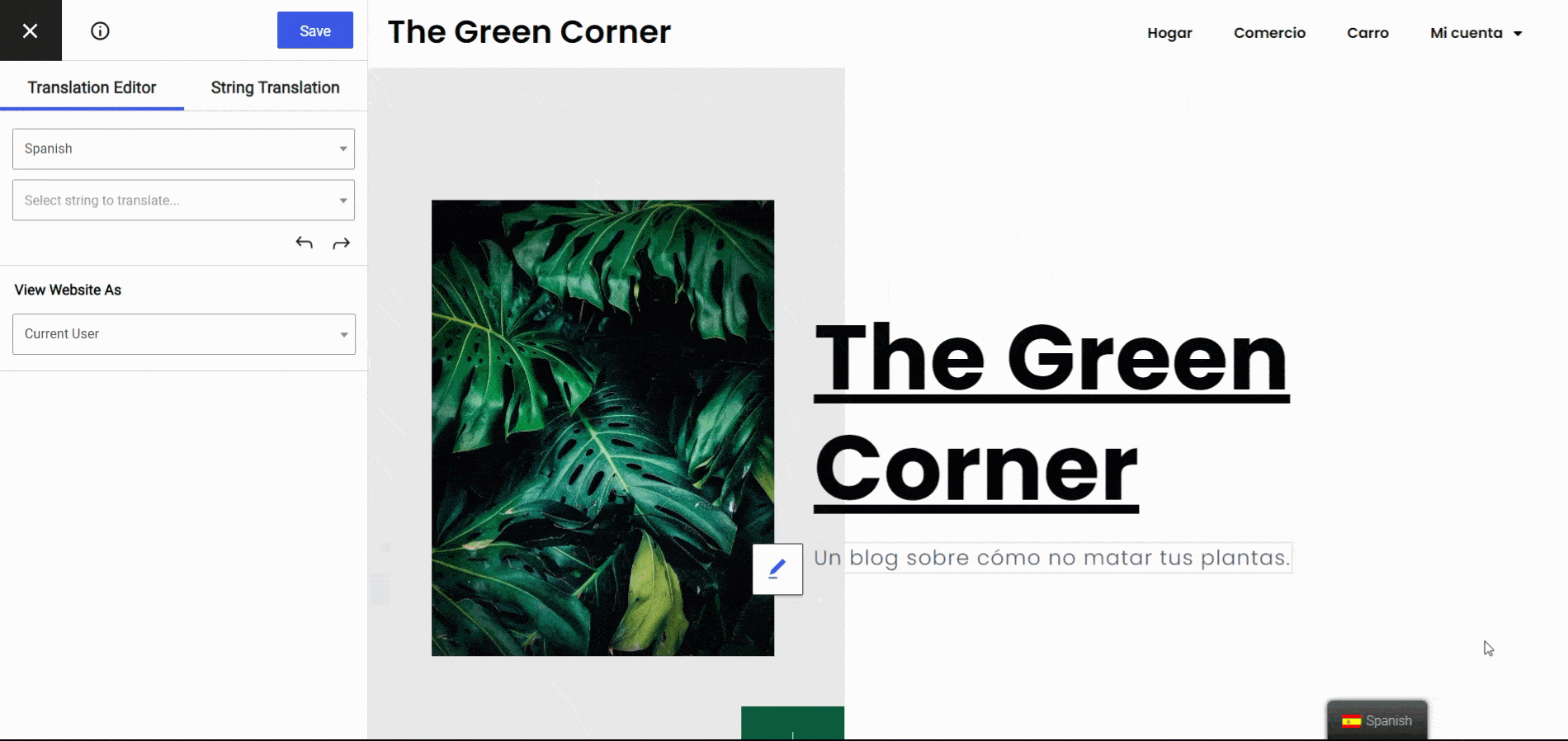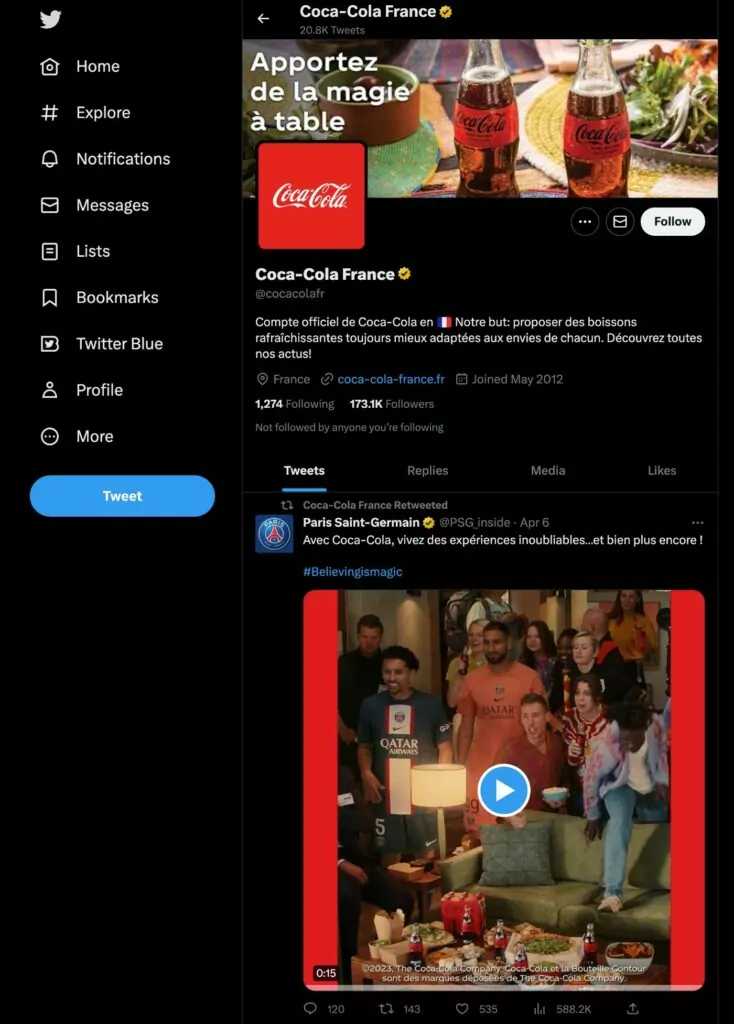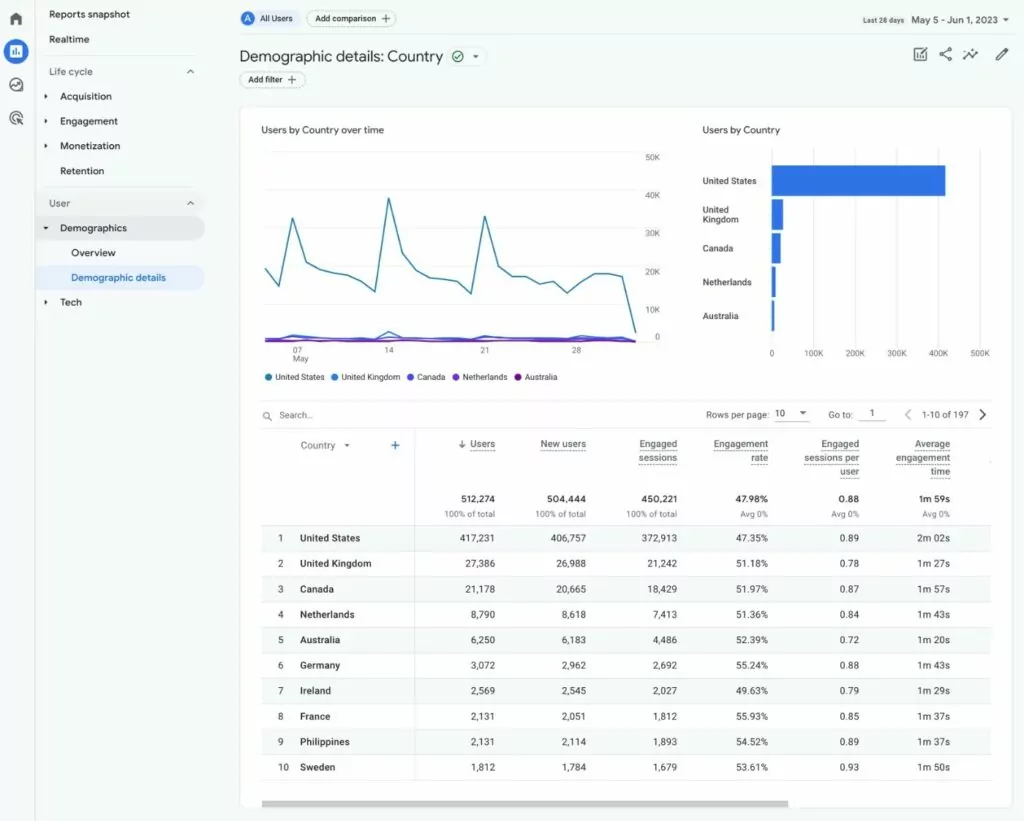
In this post
One of the best things about creating a multilingual and/or localized website is that it lets you engage in localized marketing.
With a localized site, you get the chance to reach new people in search engines, social media, and all of your other marketing campaigns.
But if you want your strategy to work, you can’t just roll out the exact same marketing approach to different locales. That’s where marketing localization comes in.
With localization in marketing, you can tailor your marketing campaigns to specific regions, cultures, and languages. By optimizing your marketing strategies for different locales, you can ensure that you’re getting the best ROI from your multilingual/multiregional efforts.
In this post, we’re going to dig into localized marketing with a specific focus on businesses with a multilingual and/or multiregional website.
We’ll start with a quick introduction to marketing localization in a little more detail. Then, we’ll get into some actionable strategies that you can implement to improve your localization in marketing.
Let’s dig in!
What Is Localized Marketing?
Localized marketing is the process of tailoring your marketing strategies to more effectively market to users in different languages and/or locations.
It involves adapting all the different aspects of your marketing strategies and content to meet the unique needs of target customers who might be located in different countries, speak different languages, and/or have different cultural values.
One of the most well-known examples of localized marketing is Coca-Cola’s “Share a Coke” campaign, which replaces the traditional Coca-Cola logo with a person’s name and “Share a Coke With” text.
What makes this a great example of localized marketing is that Coca-Cola used different names for different locales.
For example, a Coca-Cola drinker in France would see traditionally “French” names, while a Coca-Cola drinker in Spain would see traditionally “Spanish” names.
Example bottles in the Australia (the original country):

Example bottles in Vietnam:

In total, Coca-Cola rolled out these localized bottles in 50+ countries, each of which saw local names on the bottles.
Without this extra level of localization, the campaign would not have been nearly as effective.
Another example of localization would be creating digital business card in different languages and sharing them with the audiences of the respective countries during webinars, events, and meetings.
When it comes to your website, one big part of marketing localization is translating your website and other marketing content into users’ local languages.
However, marketing localization goes a lot further than just word-for-word translating your content, which is why you’ll want to follow the strategies from later in this post.
What Are the Benefits of Localization In Marketing?
If your product has a multilingual and/or multiregional audience, there are a lot of benefits to localization in marketing.
Here are some of the biggest reasons to consider implementing localized marketing for your business:
- Conversion rate optimization – if your audience comes from different locations and/or speaks different languages, you might be missing potential conversions by not localizing your marketing efforts. Surveys show that most people prefer browsing and shopping on localized websites, so you could be leaking customers by not meeting these needs.
- Increased engagement – by meeting your local customers where they are instead of forcing one strategy on all of your customers, you can increase engagement with them and build a stronger connection.
- Improved brand reputation – by investing the effort to localize your marketing content, you can boost your brand’s reputation and show people your brand is committed to that region.
Are There Any Negatives to Localized Marketing?
The main drawback of implementing a localized marketing strategy is the cost – both in terms of money and human effort.
By localizing your marketing efforts, you’re undoubtedly adding extra work to your plate.
For example, instead of creating one single marketing graphic, you might need to create a separate marketing graphic for each locale. While you probably won’t need to start from zero for each graphic, this will take some extra time to implement.
Beyond the initial implementation, it will also add extra time and effort to maintain your localized marketing efforts going forward. For example, if you change one landing page on your site, you’ll need to also adjust the localized versions of that landing page.
To make sure you’re getting a good ROI on your efforts, we recommend setting up analytics to track the effectiveness of your marketing localization – more on that later.
Seven Key Strategies for Marketing Localization
Now that you have a better understanding of what localized marketing is and why you might want to implement it, let’s get into some more actionable tips for how you can start implementing marketing localization on your own website and campaigns.
1. Understand the Difference Between Localization and Translation
If you want to implement an effective marketing localization strategy, it’s essential to understand the difference between localization and translation:
- Translation – translating your site’s content from one language to another without changing the meaning.
- Localization – adjusting your site’s content (and design) to feel like a native experience for visitors in different languages and/or locales.
For example, let’s say you have a line of text on the USA version of your site that says something like “There’s a Starbucks on every corner”.
While that line makes perfect sense to someone in the USA (where Starbucks is everywhere), it wouldn’t make as much sense if someone were browsing your site from a country where Starbucks doesn’t have a large presence.
To localize your content, you wouldn’t just translate the Starbucks references into that person’s local language. Instead, in addition to basic translation, you would also change the reference entirely to use a local cafe chain that is popular in that country.
The same holds true for date formats, currencies, number formatting, and so on.
Without understanding this key difference, you’ll struggle to create optimized localized marketing campaigns.
To learn more, you can check out our posts on what website localization is and the differences between localization vs translation.
2. Perform Market Research for Different Locales
When you launched your product in your native language/locale, you probably did some market research to understand your customers and learn how to market to them effectively.
If you want to effectively localize your marketing efforts, you’ll need to perform that same type of research for the other locales that you want to target.
In addition to general market research, you’ll want to pay special attention to any notable differences between this location and your original market:
- Formatting, currencies, units of measurement, and so on – all the nitty-gritty details
- Demographics
- Cultural values
- Any unique regional likes and dislikes
- Things that might be offensive in that region
- Etc.
Depending on how much you’re willing to invest, it might make sense to hire a local to perform this research, as they’ll intrinsically have a deeper understanding of that locale.
3. Adjust Key Marketing Content and Design for Each Language/Locale
Once you’ve performed your localized market research, the next step is to adjust all of your key marketing content for each locale.
While you’ll want to translate and localize all of the content on your site, your localized marketing strategy should put a special emphasis on the following elements:
- Prices – make sure to adjust all of the prices on your site so that they appear in a visitor’s local currency. If you have a digital product, you can also consider implementing pricing parity, which actually adjusts prices up or down based on each region’s buying power. You can implement this manually or using tools like ParityDeals.
- CTA buttons – adjust your call to action content to ensure you’re driving actions and maximizing conversions in each locale. You also might need to adjust the design, as different CTA text might shift the design around.
- Forms – make sure that every form you use is localized to optimize conversions. In some cases, you might want to change instructions or use different form fields depending on a user’s locale. You also might need to adjust things to comply with local laws, such as the European Union’s GDPR law if you’re targeting an audience in an EU country.
- Images and other website graphics – if you include any text or localized references in your site’s images, you’ll want to make sure you’re localizing that content by loading a different image depending on a user’s locale.
- Key landing pages – while it’s important to properly localize your entire site, you’ll want to put a special emphasis on key landing pages, as well as any other pages that play an important role in your sales funnel.
- Number formats, dates, units of measure, etc. – in addition to localizing prices, it’s also essential to make sure you’re paying attention to other nitty-gritty details that might need localization, such as dates, number formats, units of measure, and so on.
Again, this is not the only content you need to localize – you’ll want to properly localize everything on your site. But in terms of localized marketing, it’s important to add some extra focus to these key elements.
As part of localizing your content, you might find that you also need to update/tweak your site’s design to match.
If you’re using WordPress, the TranslatePress plugin lets you translate all of these elements using a visual, point-and-click interface. You can also see a live preview of your site so that you understand how your content localization affects the design of your site.

TranslatePress Multilingual
4. Implement a Localized SEO Strategy
When talking about marketing localization for a website, developing a strong localized search engine optimization (SEO) strategy is one of the most important areas to focus on.
With localized SEO, you can rank your website for queries that users in different locales are searching for in their native languages.
This helps you increase your site’s visibility in search and boost your organic traffic. With the other localized marketing strategies on this list, you can ensure that you’re then able to convert those visitors into customers.
Here are a few tips to implement a localized SEO strategy:
- Perform keyword research for multiple locales – instead of just looking at the search volume trends for keywords in your site’s original language/locale, dig into queries for other languages and regions to see if there are any differences.
- Localize your on-page SEO – in addition to your content, make sure that you’re translating and localizing important SEO details such as the SEO title, meta description, URL slug, and so on. If your site uses WordPress, the TranslatePress plugin makes it easy to localize all of these elements.
- Consider localized search engine preferences – while Google dominates much of the globe, there are certain markets where other search engines have a significant (or dominant) market share, such as South Korea (Naver), China (Baidu or Sogou), Czech Republic (Seznam), and so on.
- Make sure to include the hreflang tag – the hreflang tag helps Google understand which version of your site to serve to different types of visitors. On WordPress, the TranslatePress plugin can automatically add proper hreflang tags for you.
For a deeper look, you can read our international SEO strategy guide, as well as our post on SEO for multiple languages and our ultimate guide to multilingual SEO.
5. Optimize Your Social Media Marketing for Different Locales
Just as with SEO, you’ll also want to localize your social media marketing strategies to get the most from your efforts.
First off, you’ll likely want to create separate social media profiles for different locales, as it’s tough to mix localized content within the same account.
For example, Coca-Cola has separate Twitter profiles for Coca-Cola España (Spain), Coca-Cola France, and so on.
Some social networks have tools to automatically redirect users to a brand’s localized experience, which is also worth looking into.
Beyond creating localized profiles, you’ll also want to localize the content that you share. For example, look at how the Coca-Cola France Twitter account doesn’t just share translated posts, but shares unique content for that region (such as posts featuring local sports teams).

In some situations, you also might want to create accounts on new social networks that are popular in that locale.
For example, Zalo is one of the most popular social networks in Vietnam. So if you wanted to create a localized social media marketing strategy for Vietnam, you would definitely want to include Zalo in your efforts (in addition to global platforms like Facebook).
6. Consider Partnering With Local Influencers
This tip might not be a part of all localized marketing strategies. But if influencer marketing is a part of your existing strategy, another great opening for localization in marketing is to partner with local influencers.
This can help you better reach that local audience and also help demonstrate to customers that you’re serious about developing a presence in that locale.
7. Set Up Analytics to Understand Your Marketing Localization Efforts
In order to understand how effective your marketing localization efforts are, it’s important to properly set up your analytics.
For example, instead of just tracking overall conversions on your site, you’ll want to be able to track conversions based on website locale. This will let you see if certain locales are underperforming (or overperforming) vs the average.
Most analytics tools, such as Google Analytics, offer built-in features to help you segment your data by a user’s location and locale.

To simplify your workflows, however, you might want to set up custom reports to quickly see how different versions of your site are performing.
How to Perform Marketing Localization on WordPress Sites
While knowing the key fundamentals and best practices of marketing localization is important, you won’t be able to optimize your campaigns unless you’re able to actually implement those strategies on your website.
If you’ve created your website with WordPress, WordPress lacks any built-in functionality to create a multilingual and/or multiregional site with localized content.
As such, you’ll struggle to create localized content and implement localized marketing strategies like international SEO.
To be able to implement a WordPress localized marketing strategy, you can use the TranslatePress plugin.
TranslatePress gives you an easy, code-free way to localize your entire WordPress site, including key marketing elements.
Using TranslatePress’ visual, point-and-click editor, you’ll be able to translate and localize 100% of your site’s content including the following:
- Text content anywhere on your site, whether it comes from the WordPress editor, your theme, a plugin, and so on.
- Images.
- Videos.
- Forms.
- CTA buttons.

Beyond localizing the visible marketing content on your site, TranslatePress can also help you adjust other important elements in your localized marketing strategy including the following:
- SEO titles and meta descriptions
- Social media graph information to control how your content looks when it’s shared on social media
- URL slugs
If you want the easiest way to localize your WordPress site and your marketing efforts, the TranslatePress plugin is a great place to start.
TranslatePress Multilingual
Build Your Localized Marketing Strategy Today
If you want to grow your business and expand into new locales, it’s important to develop a localized marketing strategy.
With the tips on this list, you can feel confident that you’re optimizing your marketing efforts in all of the different locales that you’re targeting.
If your website uses WordPress, one of the easiest ways to implement a marketing localization strategy on your website is with the TranslatePress plugin.
TranslatePress offers an easy point-and-click way to localize all of the content on your site, including important marketing elements like CTA buttons, forms, images, SEO titles/descriptions, social media graph information, and more.
To get started, install the TranslatePress plugin today.


